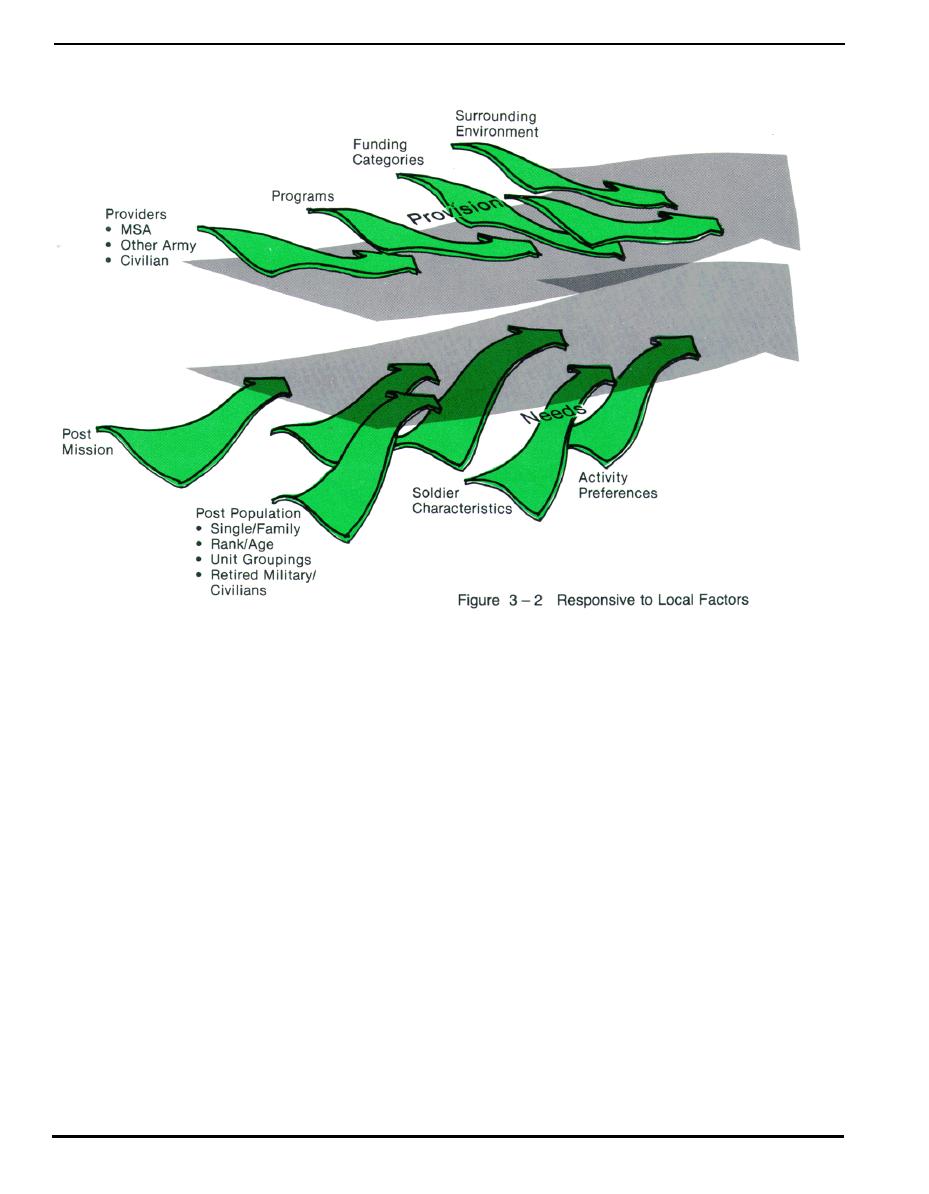
Chapter 3
b. Responsive to Local
Soldier Characteristics - the characteristics, needs and
l
preferences of the soldiers who comprise the Army,
Factors
including how they may change during times of military
Good community life is the product of coordinated inter-
Activity Preferences - the types of activities preferred
l
action among numerous elements: the individuals at the
by each user group, their likely program utilization, pat-
post, the service providers, the military command group,
terns of use, service and support needs, and environ-
the local environment. These elementsare different at
mental preferences. The degree of transiency of the
each installation, and tend to change over time. The
post population will affect these preferences.
planning process must be responsive to this multiplicity
Post Mission - the implications of different post mis-
l
of factors and their inherent changeability, and must pro-
sions for post population and characteristics. For exam-
vide solutions to meet the individual needs of each post
ple, installations may range from a large infantry post
(see figure 3 - 2).
with a preponderence of young soldiers, to an intelli-
gence unit with many highly educated senior military and
(1)
Users Needs. The needs of the users of commu-
civilian personnel, to an isolated station with small popu-
nity programs and facilities must be understood and
lation and no dependents.
reflected in the planning. Significant factors affecting
these needs include:
(2) Multiple Providers. A multiplicity of organizations
provide community services, as illustrated in figure 3 - 3.
Post Population - the size of the post population, pre-
l
These all must be involved and responded to in the plan-
sent and future, and whom it includes. Different popula-
ning process: MSA and other MWR programs, each with
tion groups will have different needs: enlisted personnel,
its multiple program divisions and funding categories;
NCO's and officers; single soldiers and families; military
other military organizations on post; and civilian off-post
units; men and women; preschool, juvenile, and teenage
sources, which will vary with the surrounding natural or
dependents; retired military and authorized civilians; per-
urban/rural environment, and with the availability to mili-
sonnel of different educational levels and backgrounds;
tary personnel of commercial, public and other services.
geographic groupings on post.
Page 3-4 DG 1110-3-142


 Previous Page
Previous Page
